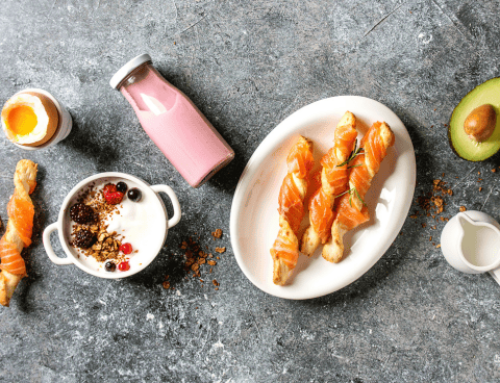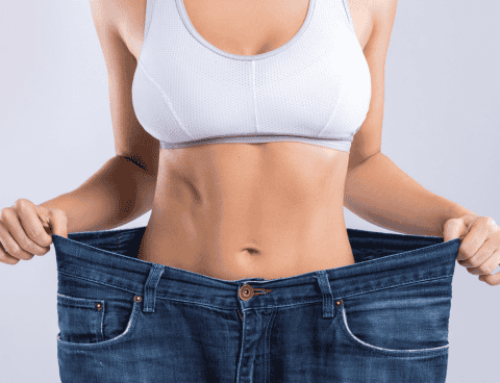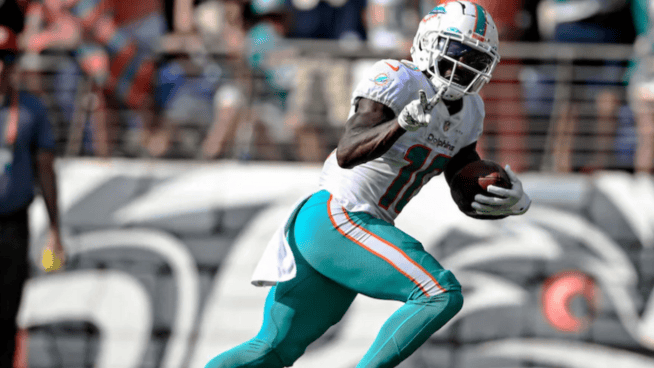Eat Junk Food Without Sacrificing Your Performance
You’ve probably been taught that specific foods are essential to achieve top athletic performance, and that indulging in others foods might slow you down or make you weak. Conventional wisdom says some foods are good and some are bad. But what if you don’t want to eat only good foods, and you enjoy some of the bad ones?
The truth is, no individual food needs to be off limits when the goal is to maximize performance. Less strict, flexible dieting can get you the results you want.
RELATED: The Mineral That Every Athlete Needs More Of
Building an Athletic Body
The two most critical factors for shaping an athletic physique are caloric intake and macronutrients.
Burn more calories than you consume and you’ll lose weight. Eat more calories than you burn and you’ll gain weight. The calories come from macronutrients carbohydrates, fats and protein, which influence body composition.
This is the foundation for how diet builds a physique and affects athletic performance. Other elements such as vitamins, minerals, water, meal frequency and meal timing also influence performance, but they are lower on the totem pole. The latest review of the scientific research shows that athletes have more flexibility with their meal timing than they once thought. If you eat within your caloric limits and reach your carbohydrate, protein and fat goals, you will take care of the most important areas of your nutrition.
Determining your individual calorie and macronutrient goals is beyond the scope of this article, but check out this macronutrient calculator for a ballpark estimate. Consulting a sports nutritionist is another option.
Superfoods Are Overrated
Coaches often fawn over specific foods like sweet potatoes, chicken and broccoli for their athletes. It’s true some foods have more nutrients than others, so they offer more benefits to your overall diet. But no one food has a profound enough effect on performance and health to prioritize it above all others. Your complete diet is what influences your results. The bulk of your meals should consist of nutrient-dense, whole, natural foods in order to fulfill your fiber, vitamin and mineral needs. But once these needs are met, there’s no reason to overthink where the rest of your carbs, fats and protein come from.
WATCH THIS: Build A Performance Plate With Sports Dietitian Leslie Bonci
If nutrient-rich foods comprise 90 percent of your diet, why can’t the other 10 percent come from “empty calories?” Just because a food is devoid of nutrients doesn’t mean it’s harmful.
This study compared two groups of people who followed diets with the same calories and macronutrients. One diet was much higher in sugar, but both groups achieved similar results in weight loss, metabolism and emotional outcomes. The study suggests that instead of taking a good versus bad approach with foods, it’s OK to view some foods as neutral. There are always gray areas, even with nutrition.
Junk food may have benefits for athletes that “clean” foods lack. Athletes need more calories than sedentary people, because they have more efficient metabolism due to greater muscle mass, and they expend more energy each day during physical training sessions. Traditional clean foods have fewer calories per ounce. If an athlete needs to eat 3,000 calories or more a day, he could have a hard time reaching his goal by eating only clean foods. He’d have to eat a larger volume of food. He would be more successful hitting his calorie goal if the calories came from foods he enjoys. Performance suffers without enough food, but flexible dieting can prevent it from happening.
The Proof is in the Pudding
Plenty of top nutrition experts advocate this approach. Consider the work of Alan Aragon and Lyle McDonald, who advocate flexible dieting (and discuss the science more eloquently than I can.) Aragon’s clients include professional athletes in the NBA, tennis players, cyclists and speed skaters.
For physical evidence of the success of flexible dieting, look at the great physiques of top drug-tested bodybuilders such as Alberto Nunez and the bodybuilding team of 3DMJ, as well as top coach/competitor Layne Norton and his clients. These people are not “all show and no go.” Nunez and Norton both competed at the 2014 USAPL Raw Nationals in July, the largest drug-tested raw powerlifting competition in the United States. Norton won his weight class.
RELATED: 12 Foods That Every Athlete Needs To Be Eating
Many top athletes in the mainstream haven’t tried this approach, because they’ve been drilled on the dogma of exclusively eating clean. But it seems the more professionals adopt a flexible approach, the more athletes realize how beneficial it can be. In time, it might become the rule rather than the exception.
What This Means for Your Nutrition
If the majority of your food comes from sources high in nutrients, you can indulge in treat foods in moderation. Let’s examine a typical, “athlete-approved” day of eating, and compare it to a flexible approach.
Typical Day
- Breakfast: 1 cup oatmeal, 3 eggs, 2 slices turkey bacon, 1 apple, 3g fish oil
- Lunch: 200 grams of sweet potato, 8 oz grilled chicken, 1 cup mixed vegetables
- Snack: 1 scoop whey protein powder, 1 cup almond milk, 2 tbsp peanut butter, 1 medium banana
- Dinner: 2 cups brown rice, 6 oz 90% lean ground beef, ½ cup black beans, 1 cup broccoli
Flexible Day
- Breakfast: 1 frosted blueberry Pop Tart, 3 eggs, 2 slices turkey back, 1 apple, 3g fish oil
- Lunch: 200 grams of sweet potato, 8 oz grilled chicken, 1 cup mixed vegetables
- Snack: 1 scoop whey protein powder, 1 cup almond milk, 2 tbsp peanut butter, 1 medium banana
- Dinner: 1-1/4 cups brown rice, 6 oz 90% ground beef, ½ cup black beans, 1 cup broccoli
- Dessert: 1.5 servings Breyer’s fat-free ice cream, 50g banana, 1 tbps Hershey’s chocolate syrup
Macronutrients Compared: Typical Day / Flexible Day
- Calories: 2,649 / 2,628
- Protein: 184g / 178g
- Carbohydrates: 285g / 293g
- Fat: 73 g / 72g
- Fiber: 40g / 39g
- Sugar: 56g / 107g
- Vitamin A: 608% / 627%
- Vitamin C: 171% / 176%
- Calcium: 89% / 104%
- Iron: 117% / 107%
- Potassium: 2,925mg / 3,004mg
- Sodium: 1,835mg / 2088mg
The sugar content is higher with the flexible approach, but this isn’t a problem for hard-training athletes, especially since the fiber intake is high. This is just one example, and you can make changes to aim for certain vitamins and minerals, while staying flexible.
The point of flexible dieting is not to encourage sweets at every meal and ignore traditional nutrient-packed foods like fruits and vegetables, but to show that you can enjoy the foods you love in moderation without sacrificing performance. Ignore the fearmongers who preach “food is fuel, not fun.” This thinking is outdated and unnecessary. There is a better, more sustainable way to get results than becoming a slave to certain foods. So what are you waiting for? Put down your Tupperware of chicken and broccoli, pick up a cookie, and relax a little.
RECOMMENDED FOR YOU
MOST POPULAR
Eat Junk Food Without Sacrificing Your Performance
You’ve probably been taught that specific foods are essential to achieve top athletic performance, and that indulging in others foods might slow you down or make you weak. Conventional wisdom says some foods are good and some are bad. But what if you don’t want to eat only good foods, and you enjoy some of the bad ones?
The truth is, no individual food needs to be off limits when the goal is to maximize performance. Less strict, flexible dieting can get you the results you want.
RELATED: The Mineral That Every Athlete Needs More Of
Building an Athletic Body
The two most critical factors for shaping an athletic physique are caloric intake and macronutrients.
Burn more calories than you consume and you’ll lose weight. Eat more calories than you burn and you’ll gain weight. The calories come from macronutrients carbohydrates, fats and protein, which influence body composition.
This is the foundation for how diet builds a physique and affects athletic performance. Other elements such as vitamins, minerals, water, meal frequency and meal timing also influence performance, but they are lower on the totem pole. The latest review of the scientific research shows that athletes have more flexibility with their meal timing than they once thought. If you eat within your caloric limits and reach your carbohydrate, protein and fat goals, you will take care of the most important areas of your nutrition.
Determining your individual calorie and macronutrient goals is beyond the scope of this article, but check out this macronutrient calculator for a ballpark estimate. Consulting a sports nutritionist is another option.
Superfoods Are Overrated
Coaches often fawn over specific foods like sweet potatoes, chicken and broccoli for their athletes. It’s true some foods have more nutrients than others, so they offer more benefits to your overall diet. But no one food has a profound enough effect on performance and health to prioritize it above all others. Your complete diet is what influences your results. The bulk of your meals should consist of nutrient-dense, whole, natural foods in order to fulfill your fiber, vitamin and mineral needs. But once these needs are met, there’s no reason to overthink where the rest of your carbs, fats and protein come from.
WATCH THIS: Build A Performance Plate With Sports Dietitian Leslie Bonci
If nutrient-rich foods comprise 90 percent of your diet, why can’t the other 10 percent come from “empty calories?” Just because a food is devoid of nutrients doesn’t mean it’s harmful.
This study compared two groups of people who followed diets with the same calories and macronutrients. One diet was much higher in sugar, but both groups achieved similar results in weight loss, metabolism and emotional outcomes. The study suggests that instead of taking a good versus bad approach with foods, it’s OK to view some foods as neutral. There are always gray areas, even with nutrition.
Junk food may have benefits for athletes that “clean” foods lack. Athletes need more calories than sedentary people, because they have more efficient metabolism due to greater muscle mass, and they expend more energy each day during physical training sessions. Traditional clean foods have fewer calories per ounce. If an athlete needs to eat 3,000 calories or more a day, he could have a hard time reaching his goal by eating only clean foods. He’d have to eat a larger volume of food. He would be more successful hitting his calorie goal if the calories came from foods he enjoys. Performance suffers without enough food, but flexible dieting can prevent it from happening.
The Proof is in the Pudding
Plenty of top nutrition experts advocate this approach. Consider the work of Alan Aragon and Lyle McDonald, who advocate flexible dieting (and discuss the science more eloquently than I can.) Aragon’s clients include professional athletes in the NBA, tennis players, cyclists and speed skaters.
For physical evidence of the success of flexible dieting, look at the great physiques of top drug-tested bodybuilders such as Alberto Nunez and the bodybuilding team of 3DMJ, as well as top coach/competitor Layne Norton and his clients. These people are not “all show and no go.” Nunez and Norton both competed at the 2014 USAPL Raw Nationals in July, the largest drug-tested raw powerlifting competition in the United States. Norton won his weight class.
RELATED: 12 Foods That Every Athlete Needs To Be Eating
Many top athletes in the mainstream haven’t tried this approach, because they’ve been drilled on the dogma of exclusively eating clean. But it seems the more professionals adopt a flexible approach, the more athletes realize how beneficial it can be. In time, it might become the rule rather than the exception.
What This Means for Your Nutrition
If the majority of your food comes from sources high in nutrients, you can indulge in treat foods in moderation. Let’s examine a typical, “athlete-approved” day of eating, and compare it to a flexible approach.
Typical Day
- Breakfast: 1 cup oatmeal, 3 eggs, 2 slices turkey bacon, 1 apple, 3g fish oil
- Lunch: 200 grams of sweet potato, 8 oz grilled chicken, 1 cup mixed vegetables
- Snack: 1 scoop whey protein powder, 1 cup almond milk, 2 tbsp peanut butter, 1 medium banana
- Dinner: 2 cups brown rice, 6 oz 90% lean ground beef, ½ cup black beans, 1 cup broccoli
Flexible Day
- Breakfast: 1 frosted blueberry Pop Tart, 3 eggs, 2 slices turkey back, 1 apple, 3g fish oil
- Lunch: 200 grams of sweet potato, 8 oz grilled chicken, 1 cup mixed vegetables
- Snack: 1 scoop whey protein powder, 1 cup almond milk, 2 tbsp peanut butter, 1 medium banana
- Dinner: 1-1/4 cups brown rice, 6 oz 90% ground beef, ½ cup black beans, 1 cup broccoli
- Dessert: 1.5 servings Breyer’s fat-free ice cream, 50g banana, 1 tbps Hershey’s chocolate syrup
Macronutrients Compared: Typical Day / Flexible Day
- Calories: 2,649 / 2,628
- Protein: 184g / 178g
- Carbohydrates: 285g / 293g
- Fat: 73 g / 72g
- Fiber: 40g / 39g
- Sugar: 56g / 107g
- Vitamin A: 608% / 627%
- Vitamin C: 171% / 176%
- Calcium: 89% / 104%
- Iron: 117% / 107%
- Potassium: 2,925mg / 3,004mg
- Sodium: 1,835mg / 2088mg
The sugar content is higher with the flexible approach, but this isn’t a problem for hard-training athletes, especially since the fiber intake is high. This is just one example, and you can make changes to aim for certain vitamins and minerals, while staying flexible.
The point of flexible dieting is not to encourage sweets at every meal and ignore traditional nutrient-packed foods like fruits and vegetables, but to show that you can enjoy the foods you love in moderation without sacrificing performance. Ignore the fearmongers who preach “food is fuel, not fun.” This thinking is outdated and unnecessary. There is a better, more sustainable way to get results than becoming a slave to certain foods. So what are you waiting for? Put down your Tupperware of chicken and broccoli, pick up a cookie, and relax a little.
[cf]skyword_tracking_tag[/cf]











